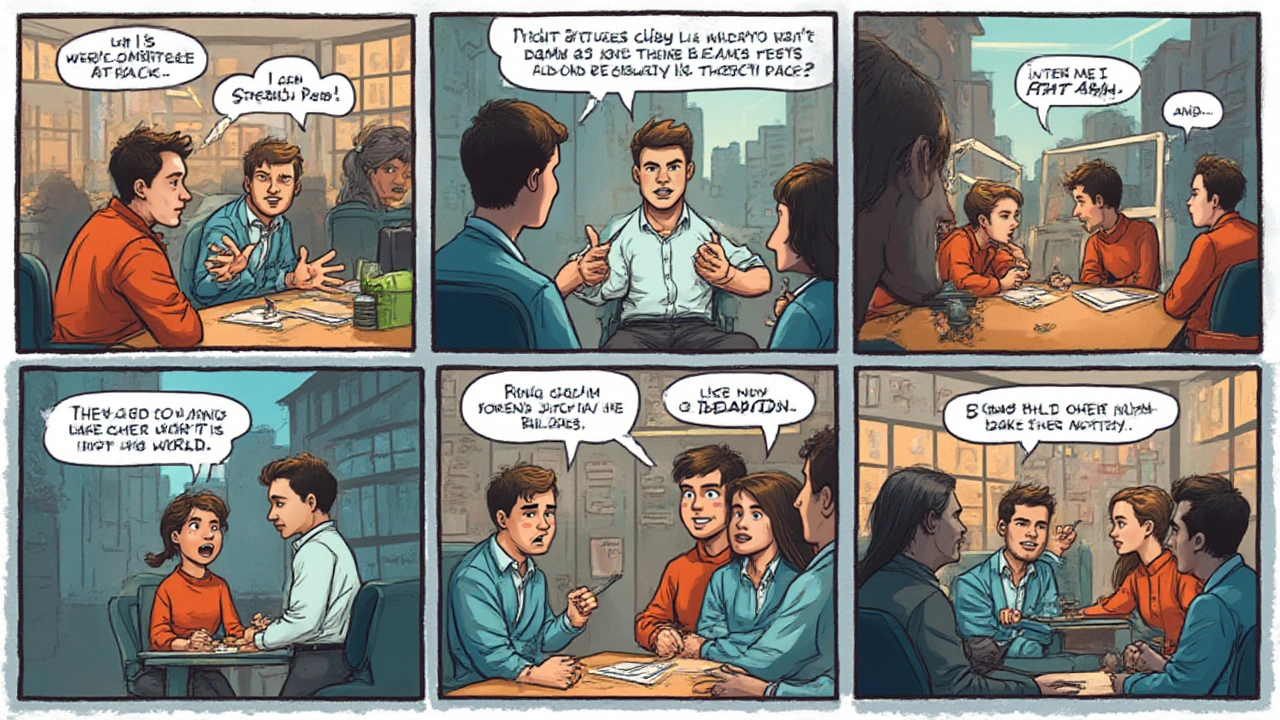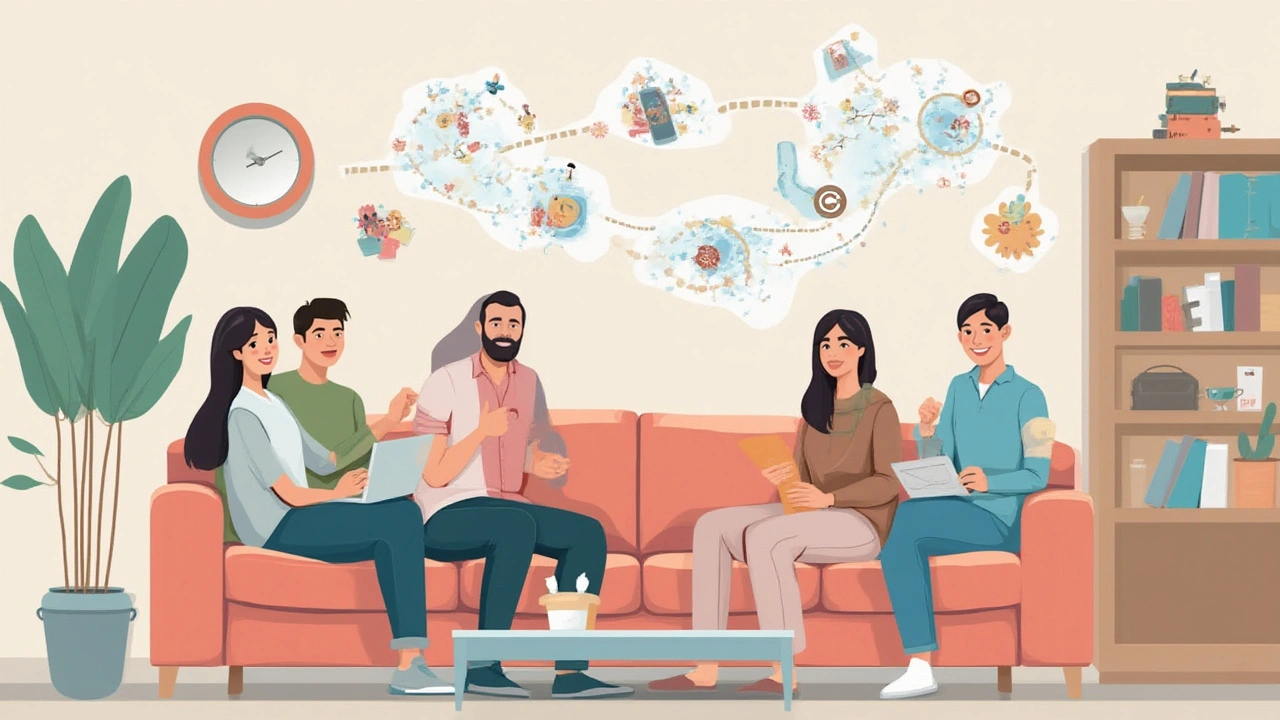Imagine your brain as a busy city, with messages darting between neighborhoods at lightning speed. For many with ADHD, it’s like rush hour never ends — signals keep stalling in deadlock. But then there’s Strattera, showing up with a traffic controller’s vest, guiding these signals seamlessly through the chaos. People often ask, “How does a non-stimulant like Strattera actually help bring order to this mess?” The answer is surprisingly simple and visual — you just need the right guide to see it.
The Basics: What Makes Strattera Different from Stimulant ADHD Meds?
Stimulant meds, like Adderall or Ritalin, work fast. They boost dopamine and norepinephrine, the ‘go’ signals in your brain, kind of like putting rocket fuel in your message-carrying taxis. Strattera, on the other hand, is quiet but steady. Its active ingredient, atomoxetine, aims almost entirely at norepinephrine — the messenger tied to focus and impulse control. What’s wild is that Strattera doesn’t mess directly with dopamine in the same way. So, while stimulants throw a party in your brain’s reward center, Strattera quietly tidies up the desks and organizes the daily schedule.
This unique mode means that Strattera takes a bit longer to show results. Most people don’t feel a change overnight. On average, it’s about two to four weeks to notice its true effects. Here’s something cool: because Strattera isn’t a stimulant, it doesn’t carry the same risk for abuse or addiction. It’s not a controlled substance, making life easier for people who have complicated medical histories or want to avoid the rollercoaster some get with quick-on, quick-off drugs.
Check out the table below that sums up the differences at a glance:
| Feature | Strattera | Stimulant Meds |
|---|---|---|
| Active Chemical | Atomoxetine | Amphetamines/Methylphenidate |
| Main Target | Norepinephrine Transporter | Dopamine & Norepinephrine Transporters |
| Time to Effect | 2–4 weeks | 30–60 minutes |
| Addiction Risk | Low | Moderate/High |
| Controlled Substance? | No | Yes |
| Common Side Effects | Dry mouth, sleep changes | Appetite loss, insomnia |
For folks who’ve dealt with side effects from stimulants, or for kids who have tics, Strattera’s gentler track record can be a game changer. It’s also a smart pick if you’re juggling anxiety or conditions that get worse with traditional stimulants.
But Strattera’s real magic is in how it lets your brain’s natural highways work efficiently — no rocket fuel needed.

A Visual Step-by-Step: Strattera’s Path in the Brain
Let’s break down Strattera’s journey, like one of those infographic flowcharts you wish you had at your last doctor’s visit. Here’s what actually happens when you take that daily capsule:
- Swallow (Atomoxetine): You take Strattera, and atomoxetine is absorbed from your gut into your bloodstream.
- Crosses the Brain Barrier: Atomoxetine slides through the blood-brain barrier — think of this as a VIP gate that only the right chemicals pass.
- Norepinephrine Collector: In the synapses (the tiny gaps between brain cells), Strattera blocks the norepinephrine transporter. Normally, this „vacuum“ sucks norepinephrine back into the cell to be reused or recycled. Strattera says "Nope," stopping that transporter.
- More in the Gap: With the transporter blocked, norepinephrine hangs around longer, like an enthusiastic friend who just won’t leave the party. More norepinephrine means a stronger, clearer message travels across the gap.
- Impact on Brain Regions: This effect is strongest in the prefrontal cortex — the area right behind your forehead that handles attention, planning, and emotional responses. Boosting norepinephrine here helps you stay on task and curb impulsive actions.
- Slow and Steady Changes: Think marathon, not sprint. Your brain needs time to re-balance. Neural circuits adapt, and you start to feel more focus, less racing thoughts, and more consistent moods.
What’s often left out? Strattera also subtly influences other chemical messengers, but its main job is keeping norepinephrine circulating where you need it most. And since it’s not revving up the dopamine engine the way stimulants do, you sidestep that crash-and-burn cycle.
For anyone still wondering how Strattera works, visualizing these steps is like following a subway map to better brain flow. Each ‘stop’ is essential.
Bonus tip: Taking Strattera at the same time every day (usually morning) helps your brain maintain that steady chemical balance. If you miss a dose, don’t double up. Just get back on track the next day.

Troubleshooting, Tips, and What Science Shows
No one loves unexpected surprises with medication, and Strattera isn’t magic. Side effects are possible, like dry mouth, sleep changes, decreased appetite, or some queasy feelings at first. Hydrate, eat before taking it, and talk to your doctor if stuff lingers. Most really bothersome effects settle down in a week or two as your body adjusts. In fact, sticking through those early weeks is key — early quitters rarely see the full benefit.
Here’s something people don’t always hear: Strattera is processed by your liver using a specific enzyme called CYP2D6. Some people have genetic quirks that slow this enzyme down, making meds linger longer in their system. So, if things feel “too much” or “not enough,” ask your doc about possible dose tweaks. Simple blood or saliva tests can reveal if you’re a slow or fast metabolizer.
Let’s talk effectiveness. Studies show about 70% of kids and adults with ADHD see improvement with Strattera — a little less than the fastest-acting stimulants, but it’s impressive for those who can’t or won’t use the quick stuff. And here’s a fun fact: Strattera can also help with emotional regulation, lowering the risk of those “meltdowns” or mood swings that often tag along with ADHD.
If you’re curious whether your symptoms run more inattention or hyperactivity, Strattera seems strongest for people whose main struggles are with focus, organization, and planning. For the fidgety or super restless, results can still be good, but sometimes slower to build.
Kids as young as six can use Strattera, which makes it a flexible option for families. Because there’s no “crash” when it wears off, you stay clear-headed even if you forget a dose or take medication breaks in summer.
Here’s a quick look at patient-friendly tips for Strattera:
- Take at the same time daily; breakfast is a good bet.
- If you get sleepy, try the evening instead — everyone’s brain is a little different.
- Dry mouth? Chew sugarless gum or sip water through the day.
- Watch for mood changes and check in with your doc every month when starting.
- Keep expectations realistic: Strattera is more of a marathon runner than a sprinter, so patience pays off.
Here’s a quick stat for the numbers people: In a 2022 review of adult ADHD, clinicians found Strattera reduced core symptoms by around 27% versus placebo — not bad for a non-stim. And about half of folks taking it found major everyday improvements within two months.
So if you’re juggling chaotic thoughts, chasing focus, or parenting a kid with ADHD and want to skip stimulant side effects, Strattera offers a different route to a smoother ride. The science points to gradual but real changes, with a touch of patience, a good hydration habit, and a willingness to tweak the timing to suit your life.
The brain’s a wild city, but sometimes all it takes is the right traffic control to make the commute manageable. And for thousands dealing with ADHD, Strattera is the guide waving the signal flags.


8 Comments
Emily Torbert
I’ve been on Strattera for a few months and the steady focus boost really helped me keep projects moving without the crash. It’s nice to have that smooth vibe instead of the roller‑coaster you get from stimulants.
Rashi Shetty
From a clinical perspective, Strattera’s selective norepinephrine reuptake inhibition offers a distinct therapeutic pathway that many patients find tolerable 😊. The delayed onset can be frustrating, yet it shields the user from the immediate abuse potential that plagues many stimulants. Moreover, its non‑controlled‑substance status simplifies prescribing for individuals with complex histories. In practice, clinicians often pair it with behavioral strategies to maximize gains. Overall, it stands as a respectable alternative for those who cannot tolerate stimulants 🚀.
Queen Flipcharts
When one contemplates the neuropharmacology of Strattera, it is imperative to acknowledge the primacy of the prefrontal cortex as the arbiter of executive function. The atomoxetine molecule traverses the blood‑brain barrier with a purpose-to inhibit the norepinephrine transporter and prolong synaptic availability. This biochemical cascade engenders a more stable attentional landscape, which is paramount for disciplined cognition. In contrast to the meteoric rise and precipitous fall of stimulant dopamine surges, Strattera cultivates a gradual equilibration of neural circuits. Such a methodical approach reflects the virtues of patience and perseverance, qualities that our nation holds dear. It is no coincidence that many American institutions, from academia to the armed forces, seek reliable, non‑addictive solutions for cognitive optimization. The low abuse potential aligns with the public health imperative to safeguard our citizens from dependency. Furthermore, the lack of scheduling classification reduces bureaucratic impediments, allowing clinicians to focus on individualized care. Clinical studies indicate that approximately seventy percent of patients experience meaningful improvement, a statistic that underscores its efficacy without resorting to hype. The medication’s side‑effect profile, while notable for dry mouth and sleep alterations, is generally manageable with simple lifestyle adjustments. It is also noteworthy that patients possessing slow CYP2D6 metabolism may require dose modulation, a nuance that exemplifies the need for precision medicine. The long‑term stability afforded by Strattera supports sustained occupational performance, an asset to the American workforce. In the broader context of societal health, providing a non‑stimulant alternative diminishes the stigma associated with psychiatric treatment. As we navigate the complexities of modern life, the steady guidance of Strattera serves as a metaphorical traffic controller, orchestrating the flow of neural signals with poise. Ultimately, its contribution to the therapeutic arsenal is a testament to scientific progress and a boon for those seeking order amidst cerebral chaos.
Yojana Geete
Oh dear, the drama of a brain that feels like rush hour never ends! Strattera steps in like a calm conductor, letting the norepinephrine linger just enough to keep the orchestra in sync. No sudden spikes, just a graceful glide through the prefrontal corridors. It’s a soothing balm for the mind, especially when stimulants feel like fireworks.
Jason Peart
Hey folks, just wanna shout out that Strattera can be a real game‑changer if you give it time – like, really time. I started on it a month ago, and at first i felt kinda fuzzy, but now my focus is way steadier than when I was hopping on caffeine. The dry mouth thing is a pain, but chewing sugar‑free gum helps – trust me, i tried a bunch of stuff. Remember to keep the dose consistent, because missing days just messes with the whole rhythm. Also, don’t be afraid to talk to your doc about that CYP2D6 test, it can save you from feeling like you’re on too high a dose. Stay patient, stay hopeful, and keep pushing forward!
Hanna Sundqvist
They’re probably hiding side effects in the fine print.
Jim Butler
Let’s get real – consistency is king when it comes to Strattera! 🚀 Taking it at the same time each day builds that steady norepinephrine flow, which means you won’t be hit with sudden crashes. Pair it with good hydration and a balanced breakfast, and you’ll notice your focus sharpening over weeks. And hey, if you ever feel drowsy, switch the dose to the evening – it’s all about what works for your rhythm. Keep the faith, stay patient, and watch the steady progress unfold! 🌟
Ian McKay
While Strattera’s mechanism is well‑documented, it’s important to note that “gradual improvement” does not excuse poor adherence. Patients must maintain daily dosing to achieve therapeutic plasma levels; sporadic intake leads to suboptimal outcomes. Moreover, clinicians should monitor for hepatic enzyme variations to tailor dosing appropriately.